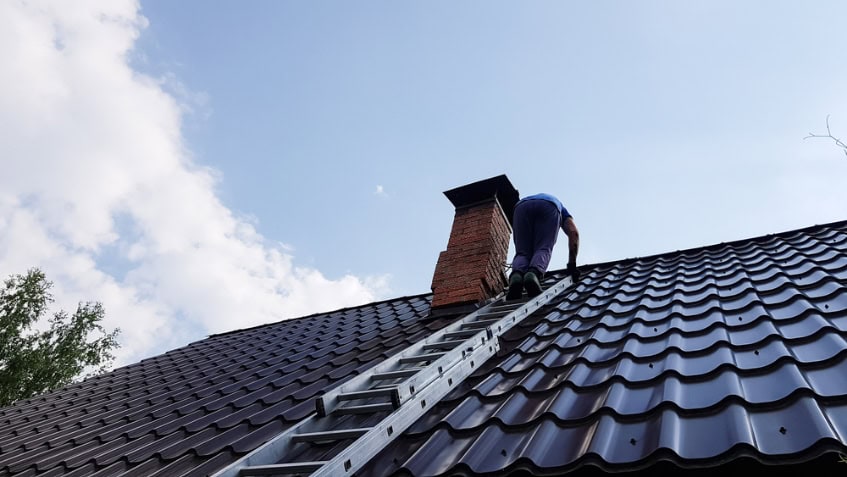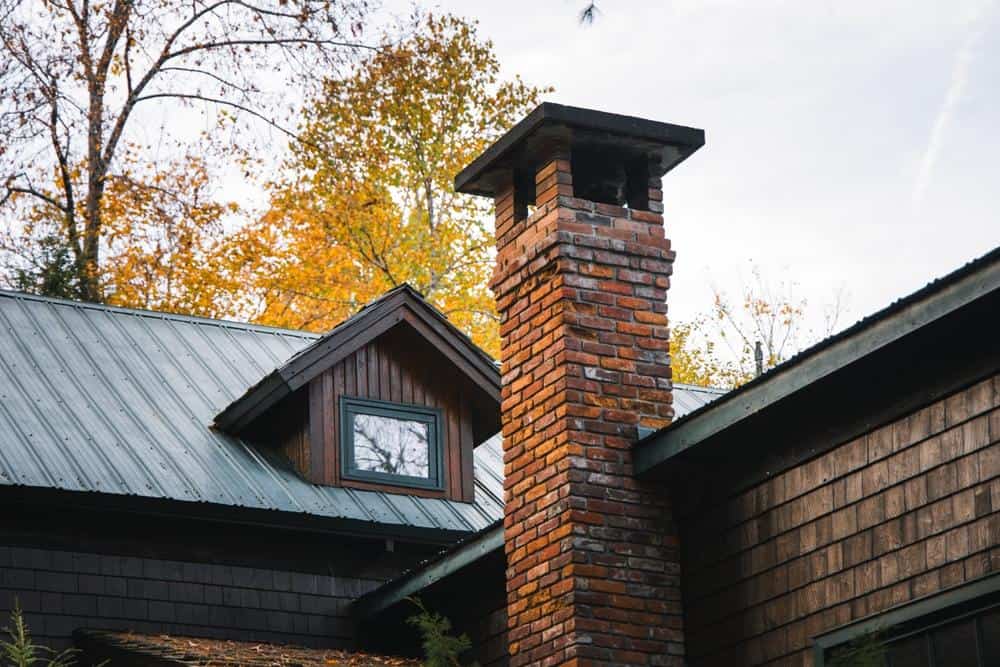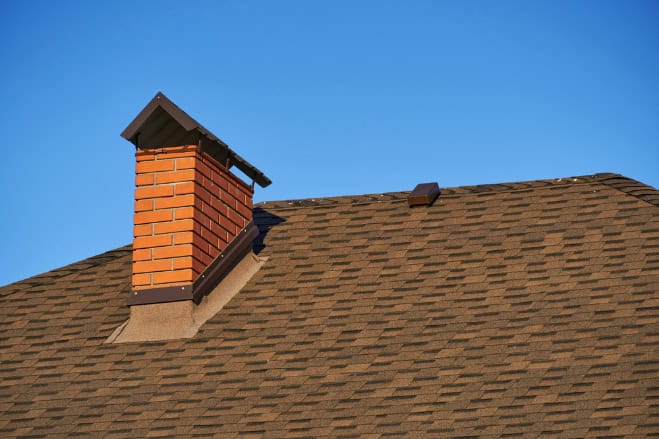
Summary:
The easiest place to start is with what you can see without climbing on your roof. Walk around your house and look up at your chimney from different angles. You’re looking for obvious changes or damage that wasn’t there before.
Cracks in the chimney structure, loose or missing bricks, and damaged mortar joints are clear indicators that repair work is needed. Even small cracks can let water in, and water damage in New England winters can quickly turn minor issues into major headaches.

That white, chalky residue you might see on your chimney exterior is called efflorescence, and it’s telling you that water is getting where it shouldn’t be. When water moves through masonry, it brings salts to the surface, leaving behind those white stains.
This isn’t just cosmetic. Efflorescence means your chimney is absorbing moisture, which can freeze and expand during Rhode Island winters, causing cracks and structural damage. The longer this continues, the more expensive the eventual repairs become.
You might also notice rust stains around your chimney cap, damper, or firebox. Rust forms when metal components get wet repeatedly, which shouldn’t happen in a properly functioning chimney system. If you’re seeing rust, water is getting in somewhere it shouldn’t be.
The tricky thing about these water issues is they often start small and internal. By the time you see white staining or rust on the outside, the problem has usually been developing for a while. That’s why addressing these signs quickly matters – you’re catching the issue before it becomes a complete chimney rebuild situation.
Your chimney crown is the concrete slab at the top of your chimney, and your chimney cap is the metal cover that sits on top. Both are your first line of defense against weather, and when they fail, everything below them is at risk.
Look for cracks in the concrete crown, even hairline ones. These cracks let water seep down into your chimney structure, where it can damage the flue liner, cause interior water damage, and create expensive masonry problems. In Providence County’s freeze-thaw cycles, small crown cracks become big crown cracks pretty quickly.
Missing or damaged chimney caps are another red flag. Your cap keeps rain, snow, and animals out of your chimney. Without it, you’re basically leaving your chimney open to the elements 24/7. You might also notice that the mesh screening around your cap is damaged or missing, which means birds, squirrels, or other animals could be making themselves at home in your chimney.
A properly installed and maintained chimney cap should last for years, but high winds, ice, and general weather exposure can damage or dislodge them. If your cap is loose, dented, or missing pieces, it needs attention before the next major storm hits the area.
Want live answers?
Connect with a Certified Chimney Inspections expert for fast, friendly support.
Some of the most important chimney problems show up inside your house, not outside. These interior signs often indicate issues with your chimney’s ability to properly vent smoke and gases – which is obviously a safety concern.
Water stains on walls or ceilings near your fireplace, white staining on the interior firebox, and smoke entering your room instead of going up the chimney are all signs that your chimney system isn’t working as it should.

When you light a fire, smoke should go up and out, not into your living room. If you’re getting smoke in your house, something is blocking or restricting your chimney’s ability to create proper draft.
This could be a damaged or collapsed flue liner, debris blocking the chimney, or structural issues affecting airflow. Sometimes animals build nests in chimneys, or leaves and branches accumulate over time. Other times, the problem is more serious – like deteriorated masonry inside the chimney or a damaged damper that won’t open properly.
Poor draft can also make your fireplace hard to start or keep burning. You might notice that fires don’t burn as well as they used to, or that you’re getting more ash and less efficient burning. These performance changes often indicate that your chimney needs professional attention.
Don’t ignore draft problems or try to work around them. Poor ventilation means combustion gases aren’t leaving your home properly, which can create carbon monoxide risks. If you’re experiencing consistent smoke or draft issues, stop using your fireplace until you can have the chimney inspected and repaired.
Water damage from chimney problems usually shows up in predictable places – on walls adjacent to your chimney, on ceilings below where the chimney passes through, or around your fireplace itself. You might see water stains, peeling paint, or wallpaper that’s bubbling or coming loose.
Sometimes the water damage is obvious, like actual dripping or pooling water during or after storms. Other times it’s more subtle – maybe just some discoloration or a musty smell in rooms near your chimney. Either way, water where it shouldn’t be means your chimney’s weather protection has failed somewhere.
Water can enter through damaged flashing where your chimney meets your roof, through cracks in the chimney structure, or through a damaged or missing chimney cap. Once water gets into your chimney system, it can travel along masonry, through walls, and show up in places that seem completely unrelated to your chimney.
The challenge with chimney-related water damage is that it’s often progressive. A small leak that only shows up during heavy storms can gradually worsen until it’s causing damage during any rainfall. Meanwhile, that water is also working on your chimney structure itself, potentially causing freeze-thaw damage to masonry and compromising the integrity of your entire chimney system.
If you’re seeing any signs of water intrusion near your chimney, especially after storms, that’s a clear signal that chimney repairs are needed. The longer you wait, the more expensive the fix becomes, and the more damage you’ll have to address both inside and outside your home.
Recognizing these warning signs early can save you thousands in emergency repairs and protect your family’s safety. Most chimney problems start small but get worse quickly, especially with New England weather working against you.
If you’re seeing any of these signs – exterior damage, water stains, performance issues, or draft problems – it’s worth having a certified professional take a look. A proper inspection can tell you exactly what needs attention and what can wait.
Don’t wait for small problems to become big ones. Contact us at Certified Chimney Inspections for a free estimate and get the peace of mind that comes with knowing your chimney is safe and properly maintained.